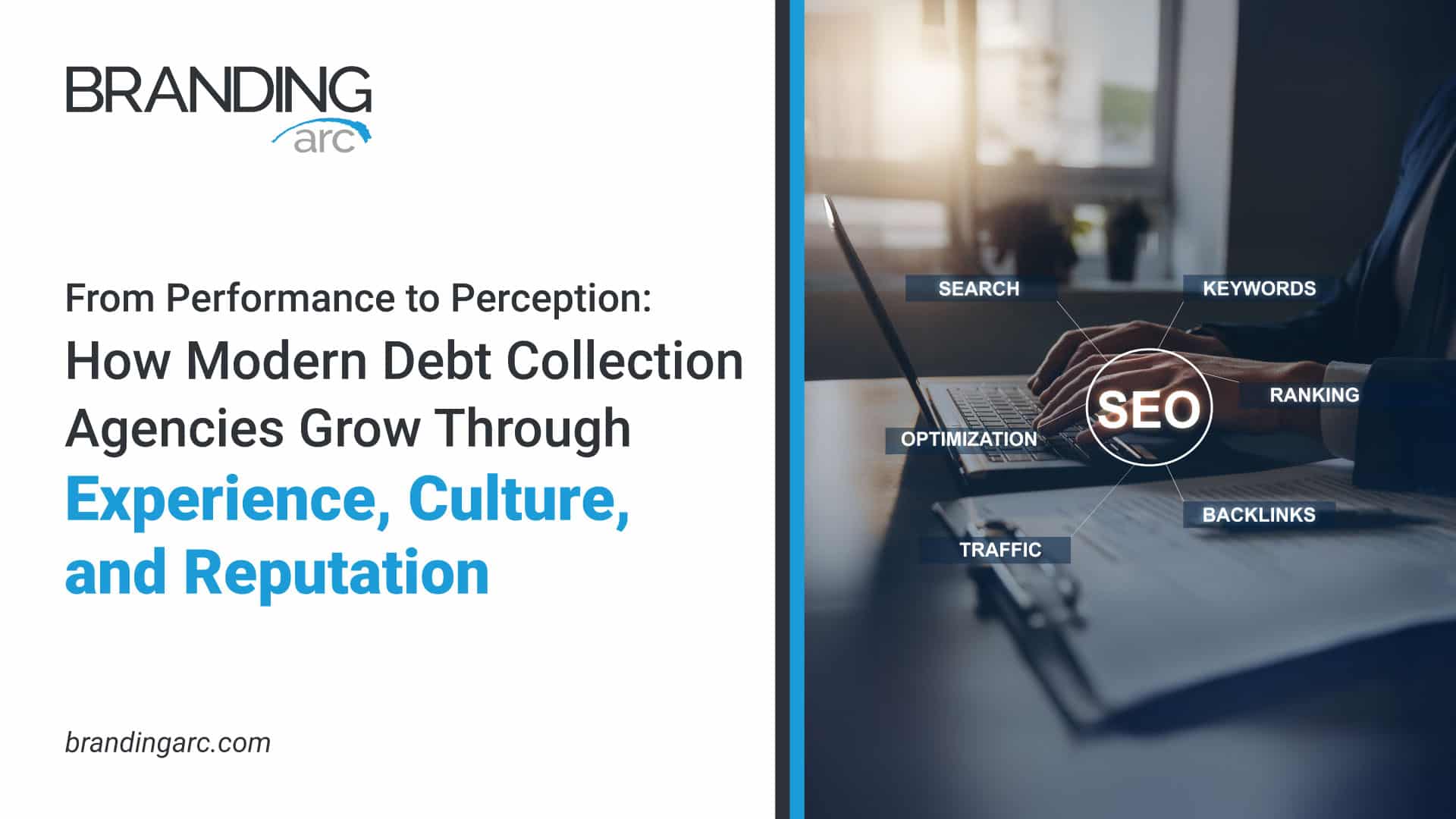Top 5 Signs Your Collections Website is Ready for a Refresh

As more consumers and clients utilize a “digital-first” approach, it’s vitally important that both your website and your online presence remain up-to-date and fresh. To keep users engaged, it is common practice to refresh your website. The question is then: “How do you know when it is time for a web refresh?”
Foremost, it’s important to ask yourself if you’d be proud of your website in its current form. We previously covered Branding Arc’s top five reasons a great website is essential, but most of the time we sit down with clients and simply ask them: “Are you proud to send consumers and potential clients to your website?” Nine out of ten times, if the answer is no, it’s time to refresh your web presence.
For those still on the fence, here are the top five ways to determine if it’s time to refresh your website.
#1 – Simply Put, Your Website Looks Like it’s From the 90s
One of the most glaring issues facing many websites in the collections industry is their outdated appearance. If your website looks like it’s stuck in the 1990s, with clunky layouts, outdated fonts, and a lack of visual appeal, it’s time for a refresh.
Today’s consumers expect a modern and visually appealing interface that reflects professionalism and trustworthiness. A sleek, contemporary design not only enhances user experience but also reinforces your brand’s credibility in a competitive market. However, it doesn’t stop at design. Users expect an intuitive interface, not an interface designed for chatbots during the reign of AOL.
If consumers coming to your site cannot easily discern vital information, or if potential clients come to your site and lose track of what it is you do, you’ve lost the conversion. Online searches and bill pay through mobile devices have become standard, so reducing the friction between an online search and a payment or contact to as few clicks as possible is crucial.
#2 – Your Website is Not Mobile Responsive
In an era dominated by smartphones and tablets, ensuring your website is mobile-first and responsive is no longer optional—it’s imperative. A significant portion of consumers access websites through mobile devices, and a non-responsive site can lead to frustrated users and missed opportunities.
By optimizing your website for mobile devices, you not only improve usability but also enhance your search engine rankings, as search engines prioritize mobile-friendly websites in their results.
#3 – Your Website Hasn’t Been Updated in Years
Seems simple enough. Even ignoring the importance of updating the look and feel of your website, if your website messaging hasn’t been updated in years, your organization is losing out on a ton of Google search value. Regularly updating your website’s content plays a crucial role in search engine optimization (SEO).
Search engines like Google favor websites that frequently update their content, as it signals relevance and reliability. Updating your website with fresh content — such as industry news, educational resources, or customer testimonials — not only attracts visitors but also improves your site’s visibility in search results.
#4 – Your Website Lacks Self-Service Options
Consumers today expect to have the ability to login and manage their accounts or pay their bills online without hassle or unnecessary barriers. Embracing the “self-service” mode of collections is vital to staying ahead of consumer trends and client needs. If your website lacks the tools or ability to provide consumers with self-service options, potential clients will likely find a partner who can better service consumer accounts.
Empowering consumers with self-service options can significantly improve their experience and streamline your operations. Implementing features such as a payment portal, opt-in/opt-out mechanisms, dispute resolution forms, and complaint submission tools demonstrates your commitment to customer convenience and transparency. These features not only reduce operational costs but also foster trust and satisfaction among your clientele.
#5 – A Website Without ADA Compliance
Accessibility is a non-negotiable aspect of website design, particularly in industries that serve diverse populations. Ensuring your website complies with the Americans with Disabilities Act (ADA) guidelines is not just a legal requirement but also a moral obligation.
Features such as text-to-speech functionality, keyboard navigation support, and alt text for images make your website accessible to individuals with disabilities, demonstrating your commitment to inclusivity and social responsibility.
Begin Your Web Refresh Journey Today
Refreshing your website in the collections industry is not merely about aesthetics—it’s about staying relevant, enhancing user experience, and adhering to best practices in digital accessibility.
By investing in a modern design, embracing mobile responsiveness, updating content regularly, integrating self-service options, and ensuring ADA compliance, you position your brand as a leader in customer service and industry innovation. If you’re looking to make the leap to a more intuitive website, reach out to the Branding Arc team for a free website consultation. We’ve built over 150 websites for clients across the globe and can help you revitalize your image, website, and brand.
About Branding Arc
Branding Arc is the only full-service marketing firm dedicated to the receivables management sector of the financial services industry. We manage the websites, search engine optimization, and online reputations of over 100 receivables firms across all disciplines, including debt buyers, collection agencies, law firms, creditors, and their service providers.
Through the creation and distribution of compelling, targeted marketing campaigns, we help companies improve their reputations, recruit staff, find clients, and establish a strong online presence.









